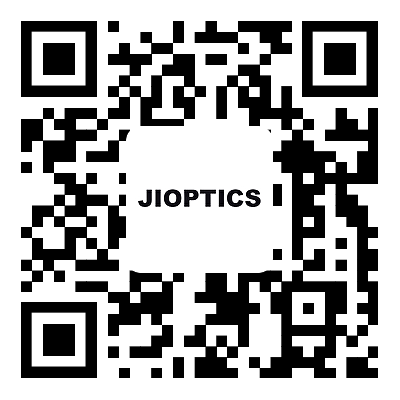Popularization of knowledge on laser ranging sensors
2023-10-10
When the laser ranging sensor is working, the laser emitting diode first targets the target and emits laser pulses. After being reflected by the target, the laser scatters in all directions. Part of the scattered light returns to the sensor receiver and is received by the optical system before being imaged onto the avalanche photodiode. An avalanche photodiode is an optical sensor with internal amplification function, which can detect extremely weak optical signals and convert them into corresponding electrical signals. A common type is a laser ranging sensor, which measures the target distance by recording and processing the time it takes from the emission of a light pulse to its return and reception. Laser sensors must accurately measure the transmission time because the speed of light is too fast.
For example, if the speed of light is about 3 * 10 ^ 8m/s, in order to achieve a resolution of 1mm, the electronic circuit of the transmission time ranging sensor must be able to distinguish the following extremely short periods of time:
0.001m/(3 * 10 ^ 8m/s)=3ps
To distinguish the time of 3ps, this is a high requirement for electronic technology and the cost of implementation is too high. But today's laser ranging sensors cleverly avoid this obstacle, using a simple statistical principle, the average rule, to achieve a resolution of 1mm and ensure response speed.
major function
By utilizing the characteristics of laser such as high directionality, high monochromaticity, and high brightness, non-contact long-distance measurement can be achieved. Laser sensors are commonly used for measuring physical quantities such as length, distance, vibration, velocity, and orientation, as well as for detecting defects and monitoring atmospheric pollutants.
laser ranging
Precision length measurement is one of the key technologies in the precision mechanical manufacturing industry and optical processing industry. Modern length measurement mostly utilizes the interference phenomenon of light waves, and its accuracy mainly depends on the monochromaticity of light. Laser is the most ideal light source, which is 100000 times purer than the best monochromatic light source in the past (krypton-86 lamp). Therefore, laser length measurement has a large range and high accuracy. According to optical principles, the maximum measurable length L and wavelength of monochromatic light can be determined λ And spectral line width δ The relationship between them is L= λ/δ。 The maximum length that can be measured with a Krypton 86 lamp is 38.5 centimeters, and for longer objects, segmented measurements are required to reduce accuracy. If a helium neon gas laser is used, it can measure up to tens of kilometers. Generally, measuring a length within a few meters can achieve an accuracy of 0.1 micrometers.
Radar sensor ranging
Its principle is the same as that of radio radar. After the laser is aimed at the target and emitted, its round-trip time is measured, and then multiplied by the speed of light to obtain the round-trip distance. Due to the advantages of high directionality, high monochromaticity, and high power of lasers, these are crucial for measuring distance, determining target orientation, improving signal-to-noise ratio of receiving systems, and ensuring measurement accuracy. Therefore, laser rangefinders are increasingly being valued. The LiDAR developed on the basis of laser rangefinders can not only measure distance, but also measure target orientation, operational speed, and acceleration. It has been successfully used for ranging and tracking of artificial satellites, such as the LiDAR using a ruby laser, with a ranging range of 500-2000 kilometers and an error of only a few meters. Not long ago, there were still research and development centers that developed the LDM series ranging sensors, which can achieve accuracy in the micrometer level within a measurement range of several kilometers. Ruby lasers, neodymium glass lasers, carbon dioxide lasers, and gallium arsenide lasers are often used as light sources for laser rangefinders.
Laser vibration measurement
It measures the vibration velocity of objects based on the Doppler principle. The Doppler principle refers to the principle that if the observer of the wave source or receiving wave moves relative to the medium of the propagating wave, the frequency measured by the observer not only depends on the vibration frequency emitted by the wave source, but also on the magnitude and direction of the motion speed of the wave source or observer. The difference between the measured frequency and the frequency of the wave source is called Doppler frequency shift. When the vibration direction is consistent with the direction, the Doppler frequency shift fd=v/ λ, Where v is the vibration velocity λ Is the wavelength. In the laser Doppler vibration velocity measurement instrument, due to the round-trip of light, fd=2v/ λ。 This type of vibration meter converts the vibration of the object into the corresponding Doppler frequency shift by the optical part during measurement, and the optical detector converts this frequency shift into an electrical signal. After appropriate processing by the circuit part, it is sent to the Doppler signal processor to convert the Doppler frequency shift signal into an electrical signal corresponding to the vibration speed, and finally recorded on magnetic tape. This vibration meter uses a helium neon laser with a wavelength of 6328 angstroms (extended), uses an acoustooptic modulator for optical frequency modulation, uses a quartz crystal oscillator and a power amplifier circuit as the driving source of the acoustooptic modulator, uses a photomultiplier tube for photoelectric detection, and uses a frequency tracker to process Doppler signals. Its advantages are easy to use, no need for a fixed reference frame, no impact on the vibration of the object itself, wide measurement frequency range, high accuracy, and large dynamic range. The disadvantage is that the measurement process is greatly affected by other stray light.
Laser velocimetry
It is also a laser velocimetry method based on the Kepler principle, and is commonly used as a laser Doppler velocimeter (see Laser Flowmeter). It can measure wind tunnel airflow velocity, rocket fuel flow velocity, aircraft jet airflow velocity, atmospheric wind speed, and particle size and convergence velocity in chemical reactions.



